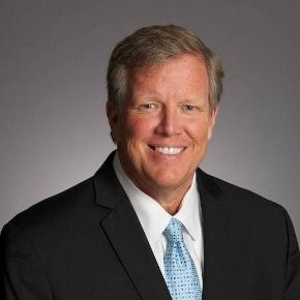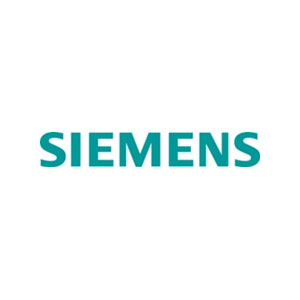Siemens Building Technologies - Experts & Thought Leaders
Latest Siemens Building Technologies news & announcements
Data isn’t just the driver for project planning and design. The Eplan Data Portal offers users access to high-quality product catalogues from a continually growing pool of renowned component manufacturers. The portal has now passed the mark of more than two-million sets of static device data from around five hundred manufacturers! By using integrated configurators, users have far more than four million data sets at their fingertips. It’s a nearly limitless and ever-increasing variety of components that can quickly and easily be integrated into projects – and the data quality is naturally top notch. Data excellence in action More than four million device data sets available means an enormous amount of variety for projects More than four million device data sets available means an enormous amount of variety for projects. However, it isn’t just the quantity, but rather the quality of the data. “Quantity and quality is something that goes hand in hand for us,” says Eplan Head of Content Quality Management Rainer Ackermann. “We have high expectations for the quality and completeness of the data sets so that we can offer our users the greatest possible added value. That’s also why we continue to work on the Eplan Data Standard, or EDS.” Manufacturers are also striving to meet these expectations of providing data sets that are as comprehensive as possible. This can include components for control cabinets, the 3D representation of a device, dimensions for drilling patterns, connection diagrams as well as commercial data, device numbers and text descriptions. Siemens automation and technology integrated Siemens has been represented in the Data Portal with energy automation and building automation products for many years. Now, protection and automation devices from the Siprotec 5 family have been added. Protection, automation, and monitoring of the power grid are essential for a resilient network. "We need a secure and reliable power supply to establish a sustainable infrastructure and achieve our net-zero goals," explains Stefan Werben, Portfolio Manager of Siprotec Medium Voltage Products at Siemens, adding:"We are pleased that we can now additionally support those customers who have chosen Eplan as their engineering platform to efficiently realize their projects in the construction, operation, and expansion of plants." Innovation in building control Sauter, a pioneer technology manufacturer in the field of building automation, system integration and building services, headquartered in Basel, Switzerland, and Freiburg, Germany, added to the Eplan Data Portal their ecos504/505 range of products for integrated room automation. “The positive feedback from our customers as well as from within our own company has motivated us to provide even more device data in the Eplan Data Standard,” says Sauter Head of Marketing and Product Management Peter Schoenenberger. Data depth ensured Rittal has around 7,300 devices stored in the Eplan Data Portal, these include cabinets, and cabinet accessoriesA majority of the device data stored in the portal – 1.4 of more than 2 million components – are already available in the Eplan Data Standard. The EDS increases and guarantees the quality of the data sets so that they can be used efficiently – ideally from engineering through to production. Rittal has around 7,300 devices stored in the Eplan Data Portal – around 5,600 of them in the Eplan Data Standard. These include control cabinets, control cabinet accessories, Blue e+ climate control devices and more. There are almost no limits globally speaking as well: If a device data set is created using ECLASS as a step file in an IEC format (the European standard), the Eplan software automatically also supports the NFPA device data set (the American standard). Simplify data with Eplan With this multi-standard support in one single data set, macros can also be saved in accordance with various standards that the Eplan Electric P8 software then recognises automatically. Furthermore, modifiable data from configurators and selectors of various manufacturers can also be used. These have linked their product catalogues directly with the Eplan Data Portal. Development continues Less visible but at least as important is the continued development of the data quality in the Eplan Data Portal. This year the focus is on preassembled cables. To ensure that machine cabling works as efficiently as possible with the new Eplan Cable proD solution, 3D data for the connectors is also being successively introduced. Technically speaking, functional improvements are also on the horizon: The Eplan Data Portal will be able to be directly integrated into local device management with the upcoming release of the new Eplan Platform 2026. This will again even further simplify selecting components and accelerate project planning and design work.
With the SIRIUS 3RC7 intelligent link module, Siemens now offers a quick and easy way to gain complete data transparency down to the field level. The plug-and-play expansion module combines information technology (IT) and operational technology (OT) with minimal installation and commissioning effort. This means that the data available at the load feeders can be used efficiently. SIRIUS modular system SIRIUS 3RC7 is part of the SIRIUS modular system, the vast portfolio for industrial controls As part of the pioneering automation concept Totally Integrated Automation (TIA) from Siemens, the SIRIUS 3RC7 intelligent link modules are seamlessly integrated into the existing automation environment. SIRIUS 3RC7 is part of the SIRIUS modular system, the comprehensive portfolio for industrial controls. “Transparency down to field level is becoming increasingly important. However, many devices are not connected to the automation system, which means important data is missing," said Andreas Matthé, CEO of Electrical Products at Siemens Smart Infrastructure. Siemens’ comprehensive solution Matthé added: "By digitalising the field level, we are creating a new dimension of transparency and enabling data-driven decisions.” A variety of load feeder parameters can be collected and evaluated directly, including voltage, current, phase imbalance, number of overload trips, and much more. The integrated diagnostic functions help detect and correct faults more quickly. Among other things, the data can be used for Senseye Predictive Maintenance, Siemens’ comprehensive solution for predictive maintenance. It uses artificial intelligence, for example to examine current fluctuations for anomalies that indicate a defect. This significantly increases the planning reliability for maintenance, availability, and cost-effectiveness of the system. SIRIUS 3RC7 intelligent link Thanks to full integration in TIA, users obtain up-to-date status data in their operating software Thanks to full integration in TIA, users receive up-to-date status information in their operating software. In addition, when using special apps such as Node-RED, they have access to a dashboard to quickly identify bottlenecks. This prevents downtime and increases the availability of the system. The SIRIUS 3RC7 intelligent link modules integrate perfectly into the compact SIMATIC ET 200SP I/O system as well as any other common automation system. Up to 16 load feeders can be connected per BA-Send module bus adapter in order to benefit from the simple commissioning, individual scalability, and maximum flexibility offered by the SIMATIC ET 200SP. SIMATIC ET 200SP I/O system In conjunction with SIRIUS switchgear and the compact SIMATIC ET 200SP I/O system for control cabinets, SIRIUS 3RC7 intelligent link modules ensure reliable and efficient data exchange between OT and IT. The addition of the new SIRIUS 3RC7 intelligent link module to the existing SIRIUS portfolio (modular system) has created a new, enhanced product: the SIRIUS Intelligent Load Feeder. The SIRIUS Intelligent Load Feeder is a pre-assembled digital feeder consisting of a SIRIUS 3RV2 circuit breaker, a SIRIUS 3RT2 contactor, and the intelligent link module.
Siemens Smart Infrastructure has expanded its Siemens Xcelerator partner ecosystem with the addition of the AI-driven field service and asset management suite from IFS, the world’s pioneering provider of industrial AI and enterprise software for companies that manage complex assets, operations, and service-focused activities. SaaS solution The powerful SaaS solution includes AI-enabled asset monitoring and a scheduling and optimisation engine that enables increased resource utilisation and service uptime of assets in electrical substations. By adding IFS's cutting-edge industrial AI suite to the Siemens Xcelerator partner ecosystem, an open ecosystem of certified partners, Siemens has expanded its offering to deliver unparalleled end-to-end value for customers in utilities, industries, and critical infrastructure. Addressing key challenges Through the integration of real-time asset performance data with automated workflows, parts management This latest portfolio addition addresses key challenges faced by customers including aging infrastructure, supply chain constraints, lack of transparency around critical spare parts and inventory management, and a shortage of experienced personnel. Through the integration of real-time asset performance data with automated workflows, parts management, and field service execution, the solution enables organisations to optimise maintenance strategies and reduce operational costs. Electrification X portfolio “Our customers are facing complex challenges including the need to increase productivity, optimise OPEX conditions, and minimise downtime while meeting sustainability goals. Technology that underpins the entire asset and service lifecycle is therefore key, as sustainability success depends upon how well you manage and maintain your enterprise assets,” says Stephan May, CEO of Electrification and Automation at Siemens Smart Infrastructure. “By adding the IFS suite to Siemens Xcelerator, our customers are set to benefit from an expanded offering that truly complements our newly launched Electrification X portfolio.” Electrification X Asset Management Siemens' Electrification X Asset Management applications leverage APIs to offer completely automated information flows - data stemming from IoT sensors and enriched by Siemens’ domain analytics - for use in IFS’ industry-pioneering AI-powered suite. This allows for triggering automated work orders, inspection checks, inventory, and spare parts management for electrical substation critical assets. Detecting asset anomalies Customers benefit from a single pane of glass to view unified data from multiple sources Customers benefit from a single pane of glass to view unified data from multiple sources, providing insight into asset health, alongside enterprise-wide automated work orders, inventories, and spare part management, all of which save them costly CAPEX and OPEX. The unique value proposition lies in IFS's ability to identify the detected asset anomalies from Siemens' systems, automatically log them, display them in lobbies, create required tickets, schedule work to the right crew at the right time, dispatch the operatives, and execute in the field. AI-enabled health assessments “We are delighted to form part of the Siemens Xcelerator partner ecosystem,” says James Lewis, Head of Service Management Business Unit at IFS. “With the end-to-end value of our joint solution, from issue detection through to resolution, our customers will benefit from one powerful SaaS application offering fully automated information flows for AI-enabled health assessments of critical assets, right through to ensuring service uptime through optimisation and scheduling of the field force, and utilisation of assets in electrical substations.”
Insights & Opinions from thought leaders at Siemens Building Technologies
The Physical Security Interoperability Alliance (PSIA) was founded in 2008 with a goal of creating ‘plug-and-play interoperability’ among physical security devices, systems and services. Since then, the organisation’s mission has both expanded to include logical security and focused more narrowly on identity, a critical aspect of security today. In recent years, PSIA has concentrated on its PLAI (Physical Logical Access Interoperability) specification, which provides a means to enable disparate physical access control systems (PACS) to communicate to each other and share employee identity data. This is especially important for companies who have made acquisitions and inherited different incompatible PACS systems. “PLAI can unify a security environment through one trusted source, even if there are multiple PACS systems,” says David Bunzel, Executive Director of the Physical Security Interoperability Alliance (PSIA). Bridge between disparate PACS The PLAI specification provides a bridge between disparate PACS, allowing a single trusted source for identity management. Leading PACS vendors including JCI (Software House), Lenel, and Kastle Systems and biometric vendors including Eyelock, Idemia, and Princeton Identity, have each implemented PLAI adapters, supporting this specification. AMAG will have their adapter in the coming months, and Honeywell and Siemens have it on their road maps. At ISC West last April, PSIA was able to demonstrate five of these vendors sharing records and the ability to add and terminate an employee and have it updated across each PACS and biometric system. PSIA was able to demonstrate five of these vendors sharing records at ISC West last April The Physical Security Interoperability Alliance (PSIA) has evolved from supporting physical security to also integrating logical security. Access to facilities and secure areas of buildings is increasingly dependent on software and hardware systems which can validate a person’s identity. “The PSIA has chosen to focus on interoperability between identity management systems and access control devices,” says Bunzel. “We have successfully demonstrated the technology, and it is now being specified by consultants, integrators and enterprise customers in actual security systems. We expect to see some large companies announcing PLAI implementations in the next quarter.” Open standards processes PSIA relies on an open standards process, with collaboration among leaders in the various parts of the security industry. Specifications are architected, discussed, drafted, and reviewed by members of the organisation in technical committees. The process is dynamic, with periodic updates added, which will improve and enhance the specifications as appropriate. The PSIA has focused on identity management for enterprise customers, says Bunzel. “We have active members who make devices that support access hardware (for example, locks and biometric systems) who by design complement PACS vendors and HR management systems.” PLAI also enables a variety of services for enterprise customers that may rely on a security credential" “We continue to add more PACS and biometrics vendors to the PLAI ecosystem, expanding the value of the specification in the market,” says Bunzel. “PLAI also enables a variety of services for enterprise customers that may rely on a security credential, including printing services, parking, and facility management. In the near future, the PSIA expects to extend PLAI into elevators. There are other identity management capabilities, and the PSIA will evaluate opportunities as the market demands them,” says Bunzel. In addition to PLAI, PSIA has several ‘legacy’ specs, but they are not actively working on further iterations. PSIA could always consider new development on legacy specs if the market demanded it. Some legacy specs address video, and security cameras often work with access control systems. However, PSIA currently is leaving video to ONVIF. The near-term direction and plan for the PSIA is to focus on PLAI and its commercialisation.
One of the biggest recent security divestitures in the news was the sale of Mercury Security to HID Global, which occurred around a year ago. The seller in that transaction was ACRE (Access Control Related Enterprises), also the parent company of Vanderbilt and ComNet. We recently spoke to founder and CEO Joe Grillo, a 30-year industry veteran, about the mergers and acquisitions (M&A) market, ACRE’s future, and new opportunities opened up by the Mercury sale. Q: What’s new with ACRE? Grillo: We have an opportunity to have organic growth and to have some scale on a global basis to be a decent size player" ACRE is a company I founded in 2012, and since then we have had six acquisitions and one divestiture. We’ll never focus on ACRE as a brand, but we currently have more visibility of ACRE as a parent company with our two strong brands, ComNet and Vanderbilt. Last year was a very busy year [with the sale of Mercury Security to HID Global] because it takes as long to sell a brand as to buy one, maybe more so. Q: What’s next? Grillo: What you are seeing from us this year is that we are again in a buying mode. No announcement yet, but we expect one by the end of the year. We are well-funded, have great partners, and see an opportunity to continue to grow acquisitively as our highly fragmented space of access control continues to consolidate. From the standpoint of ACRE, with the ComNet and Vanderbilt brands, we are also doing more integration on the backside – not what the customer sees. We will continue to grow toward a $200 million business. We were there when we owned Mercury, and we will get there again. We have an opportunity to have organic growth and to have some scale on a global basis to be a decent size player. Because ACRE are owned by a private equity company, we are brought into every opportunity: ComNet is a good example" Q: Do you see the M&A market being more competitive – more companies looking to acquire? Grillo: There’s a lot of money chasing not-so-many deals, so evaluations can get expanded. But as interest rates creep up, it is definitely a challenge to find the right valuation, the right financing and the right strategic fit. It is a very strategic market. Q: There have been some big acquisitions lately. Were you guys involved at all in evaluating those opportunities? Grillo: Because we are owned by a private equity company, we are brought into every opportunity. An example of that was ComNet. I would not have been aware that the founder passed away two years ago and that there was this opportunity to own the business. So we look at everything; anything that’s out there we look at. The biggest recent announcement in our world was S2 (being sold to UTC/Lenel), and, yeah, we looked at that. It didn’t fit our profile – it was too expensive. Great business, and it’ll be interesting to see how it fits into the UTC environment. There was also Isonas [which was recently sold to Allegion], but the size didn’t add enough scale, but I like the technology. ComNet sells communication networking solutions and products, which is more attractive than video systems for ACRE Q: So what are you looking for in an acquisition? Grillo: It’s hard for us to find something that moves the needle, and you have to find that right balance. Is it something we can digest and have the financing for, and also is there room on the back end? We are private equity-owned, so we know there will be an exit for our investors, too. So we have to find the right balance, good valuations, the right size and digestible. If you look at our acquisitions, we have done two “carve outs.” The Vanderbilt name didn’t exist until we bought the business from Ingersoll Rand, and then we bought the [intruder] business from Siemens. That’s how Vanderbilt came about. You get a lot of value when you carve out a business, but there’s a lot of work. In the case of Mercury or Access Control Technology (ACT) that we acquired; they were growing and profitable but they stretch your finances a lot more. So you have to find the right mix in there. Q: Does video interest ACRE at all? Grillo: We have to find the right balance, good valuations, the right size and digestible"ComNet is our video play. ComNet sells communication networking solutions and products, and 70 to 80 percent of that is used for video systems. But unlike cameras, which don’t interest us, it’s actually good margins, highly specialised repeat business and with good channel partners. So where are we going to play? Cameras – no (because of commoditisation). We have some recorder technology (from the Siemens acquisition) and we have the communication networking technology (with ComNet). On the software side, we have looked at a lot of the VMS companies, and a lot of them have been on the market. But the valuation expectations can be high because they are software companies. And we really believe in partnering as a good thing, too. If we integrate to Milestone or Salient or some of these companies, we will never lose an access control client because they chose a particular VMS. Q: ACRE is also looking to grow organically, isn’t it? Grillo: From a technology perspective, we are a product company and we are continuing to bring new products to the market with the ComNet communication networking business and the access control business. And in Europe, we have a third leg of the stool, which is the very successful intrusion and burgular alarm business we acquired from Siemens (SPC products now sold under the Vanderbilt brand). That business continues to do well and is now one of the highest performing segments in our portfolio.The intrusion and burgular alarm continues to do well and is now one of the highest performing segments in our portfolio" Q: But you don’t have to own a company to make it part of your solution. Grillo: An important word is integration. We have to integrate to all the wireless locks. We have to integrate to the VMS systems. But we don’t have to own them. Q: How has the Mercury Security divestiture impacted the rest of your business? Grillo: It has opened up the opportunity for us to look at Mercury partners as possible acquisition targets without worrying about conflicts with the very good business of Mercury. We have more flexibility now compared to the Mercury era. Q: How will the economic cycle impact the security market? Grillo: Interest rates are a much bigger issue than the overall economic cycle. We talk a lot about it with our owners – clearly interest rates are tightening up. If you go out to do acquisitions or to borrow money to do something with your business, it will be tougher than it was two years ago, and it may get worse in the next two years. Security is less impacted by the economic cycle than some industries.
SourceSecurity.com’s most trafficked articles in 2017 reflected changing trends in the market, from facial detection to drones, from deep learning to body worn cameras. Again in 2017, the most well-trafficked articles posted at SourceSecurity.com tended to be those that addressed timely and important issues in the security marketplace. In the world of digital publishing, it’s easy to know what content resonates with the market: Our readers tell us with their actions; i.e., where they click. Let’s look back at the Top 10 articles posted at SourceSecurity.com in 2017 that generated the most page views. They are listed in order here with the author’s name and a brief excerpt. MOBOTIX is increasingly positioning itself as a specialist in high-quality IP surveillance software 1. MOBOTIX Aims High with Cybersecurity and Customer-Focused Solutions [Jeannie Corfield] With a new CEO and Konica Minolta on board, MOBOTIX is set for expansion on a global scale. But how much growth can we expect for a company like MOBOTIX in an increasingly commoditised surveillance market, where many of the larger players compete on price as a key differentiator? While MOBOTIX respects those players, the German manufacturer wants to tell a different story. Rather than competing as a camera hardware manufacturer, MOBOTIX is increasingly positioning itself as a specialist in high-quality IP surveillance software – camera units are just one part of an intelligent system. When MOBOTIX succeeds in telling this story, partners understand that it’s not about the price. 2. ‘Anti-Surveillance Clothing’ Creates a New Wrinkle in Facial Detection [Larry Anderson] The latest challenge to facial recognition technology is “anti-surveillance clothing,” aimed at confusing facial recognition algorithms as a way of preserving “privacy.” The clothing, covered with ghostly face-like designs to specifically trigger face-detection algorithms, are a backlash against the looming possibility of facial recognition being used in retail environments and for other commercial purposes. 3. Drone Terror: How to Protect Facilities and People [Logan Harris] Already, rogue groups such as ISIS have used low cost drones to carry explosives in targeted attacks. Using this same method, targeting high profile locations to create terror and panic is very possible. Security professionals and technologists are working furiously to address the gaps in drone defence. Compact Surveillance Radar (CSR) is a security technology addressing the problems with other types of detection. CSR, like traditional radar, has the benefit of being able to detect and track foreign objects in all weather conditions, but at a fraction of the size and cost. The last couple of years have seen a tremendous surge in research and advances surrounding a branch of Machine Learning called Deep Learning 4. Deep Learning Algorithms Broaden the Scope of Video Analytics [Zvika Anshani] Until recently there have been minimal applications of Machine Learning used in video analytics products, largely due to high complexity and high resource usage, which made such products too costly for mainstream deployment. However, the last couple of years have seen a tremendous surge in research and advances surrounding a branch of Machine Learning called Deep Learning. The recent increased interest in Deep Learning is largely due to the availability of graphical processing units (GPUs). GPUs can efficiently train and run Deep Learning algorithms 5. Body Worn Cameras: Overcoming the Challenges of Live Video Streaming [Mark Patrick] Most body camera manufacturers, that are trying to stream, attempt to use these consumer technologies; but they don’t work very well in the field, which is not helpful when you need to see what is happening, right now, on the ground. The video must be of usable quality, even though officers wearing the cameras may be moving and experiencing signal fluctuations – most mobile video produces significant delays and signal breakups. Video and audio must always remain in sync so there’s no confusion about who said what. Therefore, special technology is required that copes with poor and varying bandwidths to allow a real-time view of the scene and support immediate decision-making by local and remote team members and support teams moving to the scene. 6. QinetiQ Demonstrates New Privacy-Protecting Body Scanner for Crowded Places [Ron Alalouff] QinetiQ has developed a scanner that can be used in crowded places without having to slow down or stop moving targets. The body scanner, capable of detecting hidden explosives or weapons on a person, has been demonstrated publicly in the United Kingdom for the first time. SPO-NX from QinetiQ – a company spun out of the UK’s Defence Evaluation and Research Agency (DERA) in 2001 – can quickly screen large groups of people for concealed weapons or explosives in a passive, non-intrusive way, without needing people to stop or slow down. 7. ISC West 2017: How Will IT and Consumer Electronics Influence the Security Industry? [Fredrik Nilsson] A good way to predict trends [at the upcoming ISC West show] is to look at what’s happening in some larger, adjacent technology industries, such as IT and consumer electronics. Major trends on these fronts are the most likely to influence what new products will be launched in the electronic security industry. Proof in point is H.264, an advanced compression technology ratified in 2003 and adopted as the new standard by the consumer industry a few years later. By 2009, it became the new compression standard for the video surveillance industry as well. By drawing data from a number of different sources and subsystems, it is possible to move towards a truly smart environment 8. Integrating Security Management into Broader Building Systems [Gert Rohrmann] Security solutions should be about integration not isolation. Many organisations are considering their existing processes and systems and looking at how to leverage further value. Security is part of that focus and is a central component in the move towards a more integrated approach, which results in significant benefits. By drawing data from a number of different sources and subsystems, including building automation, it is possible to move towards a truly smart environment. 9. How to Use Video Analytics and Metadata to Prevent Terrorist Attacks [Yury Akhmetov] How we defend and prevent terrorism must be based on intelligent processing of information, and an early awareness of potential threats – and effective preventive action – may eliminate most attacks. Video analytics, automated surveillance and AI decision-making will change the rules of the struggle between civilians and terrorists by making attempted attacks predictable, senseless and silent. To what extent can technology investigate and prevent terror crimes considering the latest technology innovations? 10. Next Generation Video Analytics: Separating Fact from Fiction [Erez Goldstein] ‘Next generation video analytics’ is a catchy marketing phrase, is how much substance is behind it? Video analytics as a technology has been with us for many years, but there has always been an air of confusion and mystery around it, in large part created by Hollywood movies, where every camera is connected, an operator can search the network and locate the villain in a matter of seconds. I am pleased to say that, in many respects, fact has caught up with fiction, with the newest video analytics solutions that are now on the market focusing on search and specifically real-time search. These solutions have been tried, tested and proven to help reduce search time from hours to minutes and even seconds.
One system, one card
DownloadAligning physical and cyber defence for total protection
DownloadUnderstanding AI-powered video analytics
DownloadEnhancing physical access control using a self-service model
DownloadHow to implement a physical security strategy with privacy in mind
Download

























































